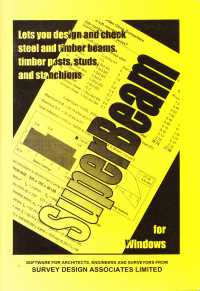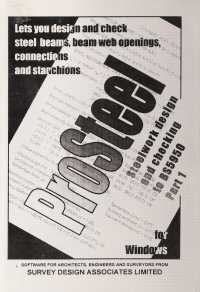To Windows

Porting SuperHeat to Windows went well: the Turbo Vision user interface in our series 2 programs translated to Windows with minimal changes. As a Borland Pascal user, adopting Delphi was a no-brainer. When moving to Windows, the biggest changes were in displaying and printing text. The first releases of SuperHeat 3 & 4 laid out tabular data using spaces so users were limited to selecting monospace fonts. This requirement was soon removed. Printing was much easier in Windows - printer driver issues had been the number one technical support issue with our DOS programs; with Windows they all but disappeared.
Initially we shipped two versions of our Windows programs. Our SuperHeat, SuperBeam and ProSteel series 3 & 4 programs were built off the same code base, with series 3 programs for Windows 3.1 (still around at this time), compiled with Delphi 1, and series 4 for Windows NT/95/98 with Delphi 3 and later. The last series 3 programs shipped in late 2000 and they will not be explicitly referred to below.
Chuck Jazdzewski (the original architect of the VCL library in Delphi) on the foundations of Delphi
SuperBeam
 SuperBeam 4 finally
shipped at the tail end of 1998 and put an end to three years of indifferent sales - at
this time many big names in software crumbled as they failed to transition to Windows.
Since then it's evolved enormously. Changes are listed on our SuperBeam support pages
SuperBeam 4 finally
shipped at the tail end of 1998 and put an end to three years of indifferent sales - at
this time many big names in software crumbled as they failed to transition to Windows.
Since then it's evolved enormously. Changes are listed on our SuperBeam support pages
Since SuperBeam 4 first shipped, the manual has changed several times. Initially we produced a one-volume A5 manual, enhanced by a glossy laminated cover as shown here. In 2002 we changed from shipping programs on floppy disks to CDs and later gave up the expensive and heavy vinyl folders that we'd used almost from the beginning in favour of cheap and light DVD boxes. At this time the manual was shrunk in size to fit in a DVD box and again split into two. Then in 2008 after SDA became Greentram Software we switched manual production from Four Point Printing who had given us excellent service for 15 years to Lulu print on demand.
SuperBeam 7 took over from SuperBeam 4 at the start of 2016 giving the program a smart new look. In case you wonder, SuperBeam 5 and 6 were US versions of SuperBeam using imperial units, an interesting exercise. As for their sales, best not ask. Meanwhile, 32 years after it was first released SuperBeam 7 continues to sell well.
ProSteel
 ProSteel 4 had a short
life: it shipped at the end of 1999 and was replaced by ProSteel 5 in November
2001
ProSteel 4 had a short
life: it shipped at the end of 1999 and was replaced by ProSteel 5 in November
2001
The change in release number was due to reworking to ProSteel to accord with BS5950-1:2000; lots of other enhancements (listed here) were introduced at the same time, most finding their way into SuperBeam. SuperBeam and ProSteel share a lot of code, so non-specific enhancements made to one program soon find their way into the other. Like SuperBeam, ProSteel has evolved enormously. Changes are listed on our support pages
In tandem with SuperBeam, in 2016 ProSteel was given a new look and renamed as ProSteel 7 and it too continues to grow its user base.
EuroBeam
In the early 2000s it seemed that for structural design Eurocodes would take over from British Standards and in 2011 we introduced our Eurocode-based program, EuroBeam. It does nearly everything that the other two programs do. The latest incarnation, EuroBeam 3 adds simple RC beam design.